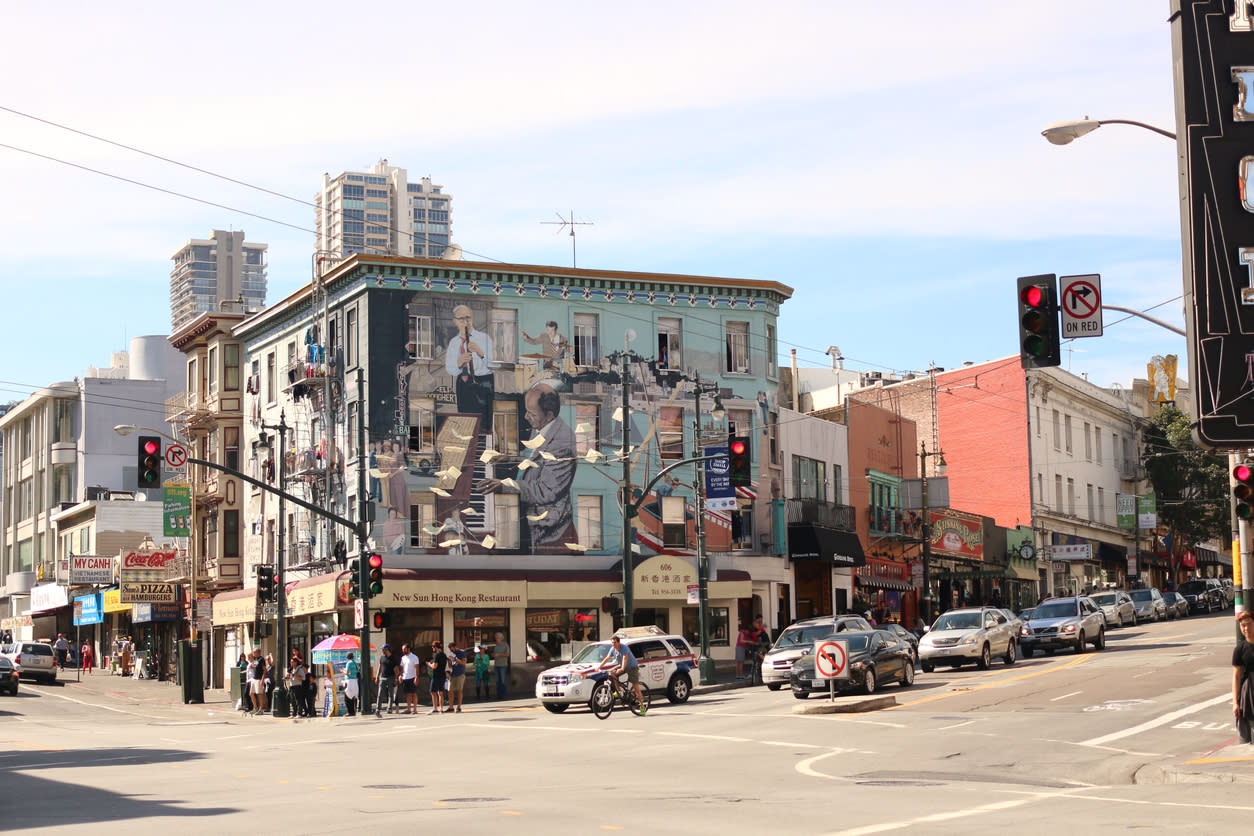When New South Wales Premier Jack Lang opened Australia’s last General Motors factory in 1926, he declared the enterprise would “be a striking advertisement to the world of this country of ours”.
Cars are no longer made in Australia, but the handsome brick GM building still stands on Carrington Road, Marrickville, in Sydney’s inner west. Now, 223 small, local enterprises occupy repurposed factories along the road, supporting about 1800 full-time jobs.
Ninety-two years after Lang said “there is no market like that created by local labour”, these diverse business – woodworkers, leather workers and puppet makers among them – are facing extinction. The developer Mirvac has proposed building a $1 billion high-rise apartment project in the precinct.
In an attempt to save the Marrickville makers, Monash’s Professor Carl Grodach, director of Urban Planning and Design, took part in a study, Made in Marrickville, that audited the enterprises that have set up on Carrington Road.
The report argues that many of the businesses won’t survive if they’re forced to relocate. It makes the case that industrial zones need to be retained in the inner city.
“Australian manufacturing is not in decline – it is hidden in plain sight,” the report states. “It is changing form, increasingly interfacing with creative and knowledge industries.”
Despite the many headlines announcing the death of manufacturing, it’s “having a revival”, Professor Grodach says. This is true in Australia, and in other developed nations.
“It’s not all being outsourced to low-wage countries,” he says. “It’s not all mass manufacturing. The small, flexible niche production can survive in urban areas – and it is.”
Creativity recognised
For at least two decades, creativity has been identified by planners and economists for its contribution to sustainable urban development.
UNESCO names cities of music, literature, design, film and gastronomy, for instance, and this branding has supported tourism and economic growth. Yet manufacturing enterprises also play an important, if under-recognised role in supporting creative cities, Professor Grodach says.
The Carrington Road study forms part of an Australian Research Council project, Urban cultural policy and the changing dynamics of cultural production.
Professor Grodach is leading the project, which will also examine the links between manufacturing and cultural production in Melbourne, New York, Berlin, San Francisco and Shenzhen in China.
The main story we’re told about post-industrial manufacturing “is that it is all driven by high-tech”, he says.
“It’s robotics. Or new, technological revolutions in 3D printing or nanofabrication. The piece that goes missing is that you actually have all this other ‘low-tech’ making and manufacturing going on, but that’s completely off the radar.
“So we wanted to demonstrate that this exists, and is economically viable, and that it’s surviving despite all these pressures against it.”
For the past few decades, urban cultural policy in Australian capital cities and in other Western nations has focused on “place-based, consumption-led redevelopment”, he says.
“These are all about getting people to come to a place to spend money. It’s tourists, or it’s locals wanting to tour the laneways in the CBD ... It’s not about supporting the people who actually make things, the cultural producers.”
"The small, flexible niche production can survive in urban areas – and it is.”
Australia’s view of economic development in urban centres is particularly one-sided, he believes.
“We’re giving up already limited industrial space for what we see as the quick-fix gain of a turnaround on apartments.”

While the need for affordable housing is often cited to justify these developments, “the housing that’s being produced is not affordable for many people”, he says.
Simply increasing the supply doesn’t bring prices down – “abundant research shows this”. The apartment complexes that are replacing old factories in Brunswick, where the streetscape is changing and real-estate prices are rising, are a good example.
“You are losing these productive spaces – and jobs – for speculative housing, and vacancy rates are on the rise, so you’re not creating the street life that planners want,” Professor Grodach says.
“We’re saying we need new strategies. We need a third way, a compromise, to retain some of this productive industrial space.”
Small enterprises thriving
For the Melbourne part of the study, PhD student Declan Martin has worked with Professor Grodach to map where the creative manufacturing industries are located throughout the metropolitan area.
Surprisingly, small creative manufacturing enterprises continue to exist alongside traditional creative industries in South Melbourne, including Fisherman’s Bend, and they’re surviving in the gentrifying north – Brunswick, Preston, Reservoir and Coburg.
Clusters of creative manufacturing extend as far as Dandenong, alongside the larger manufacturing enterprises located there. The next step for the researchers is to “walk the streets and talk to people to better understand how they work and survive in the current environment”, Professor Grodach says.
He says the concentration of employment in cultural product manufacturing in Melbourne is on a par with the creative industries and professional services for which the city is better-known. They include furniture makers, ceramicists, jewellers, even artisanal food manufacturers – bakers, brewers and coffee roasters, to name a few. Then there are the specialised tradespeople – carpenters, metalworkers, printers – who support the architects, designers and media companies.
One of his hopes for the study is that by documenting the extent of this activity, awareness will grow of the need to protect and support these enterprises by way of zoning regulations, for instance.
The need for appropriately zoned land close to the inner city is explained in the Made in Marrickville report. It argues that relocating the Carrington Road businesses to greenfields sites will not work, because many rely on their proximity to the cultural institutions they support, such as the Opera House, the Mardi Gras, the ABC, the Royal Easter Show and the Taronga Zoo.
At night, the precinct is used as a rehearsal and recording space for Sydney bands that have been squeezed out of live venues because of poker machines, gentrification, liquor licensing laws and noise disputes.
“The impact of the precinct on Sydney’s musical ecology is difficult to quantify,” the report states. “Beyond mainstream recording artists it supports a thriving scene of grass-roots music-making in a city otherwise starved of appropriate rehearsal and recording spaces.”
The developers have suggested setting aside a “makerspace” in Carrington Road, but the report argues that this is “unlikely to meet existing enterprises’ space needs. Rents in the area will escalate, pricing out enterprises documented in this audit.”
Potential solutions
So what can be done? Manufacturers need purpose-built premises where they can work, store equipment and make noise. It helps if they’re located in clusters too, because of the networks that can arise; where knowledge, contacts and ideas are shared.
Other cities have proposed solutions.

San Francisco, for instance, with its proximity to Silicon Valley, is “one of the most expensive places to live and work in the US”, Professor Grodach says. To preserve small-scale manufacturing, the city has introduced new regulations in its production, distribution and repair (PDR) zones, whereby high-rent office developments cross-subsidise lower-rent industrial space.
The research project will investigate how this and similar policies – which are being pursued by Boston, LA, Nashville and Austin in the US, and Vancouver in Canada – are working.
New York and Berlin are included in the study because they’re celebrated creative cities.
“Shenzhen is an outlier,” Professor Grodach says. “It’s a classic, powerhouse manufacturing hub in China that has turned towards – by their standards – smaller-scale manufacturing.”
Shenzhen’s approach is to link manufacturers with designers, so they can experiment by making prototypes and small-batch runs. “And that’s a big part of what I think we can learn from them in Australia,” he says.
Professor Carl Grodach will be part of a 5 September panel discussion, "Melbourne’s missing middle: can suburban infill accommodate a growing population?", as part of The Festival of Urbanism 5, which runs September 4-13.






